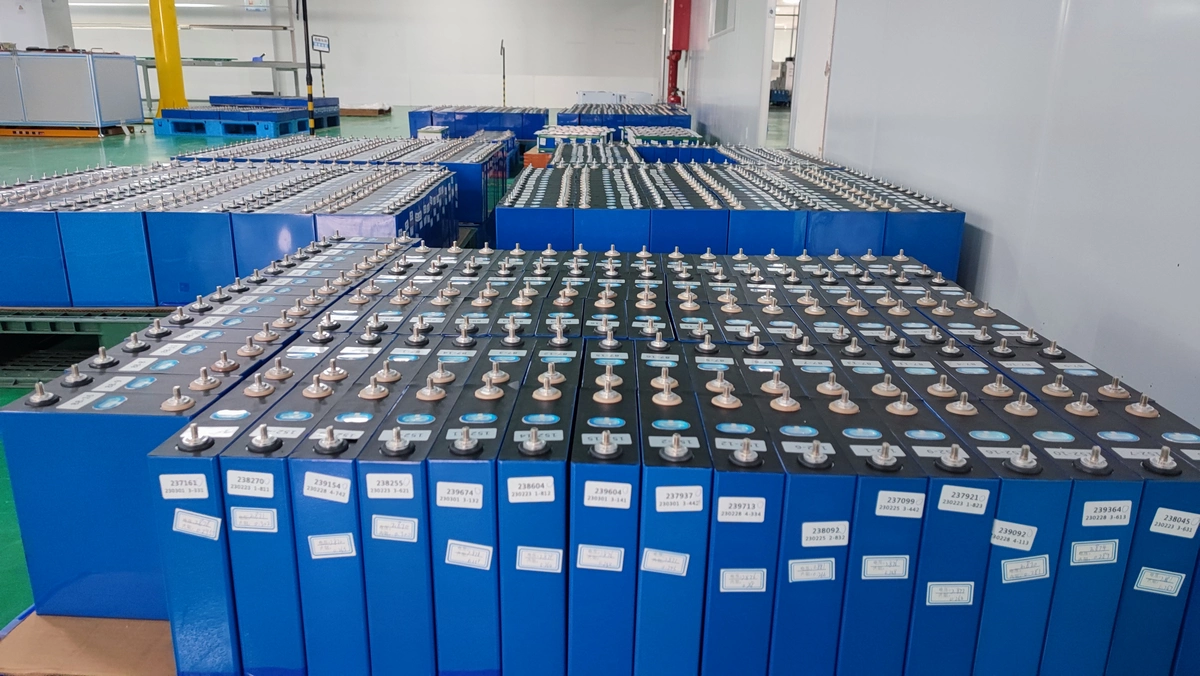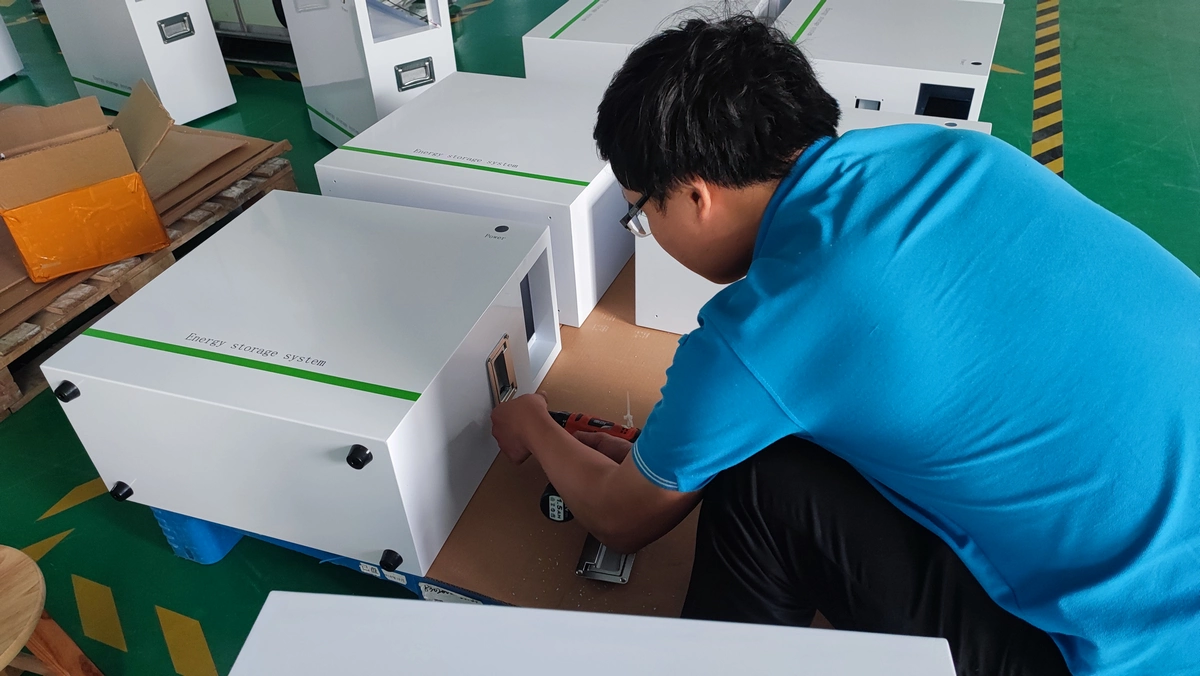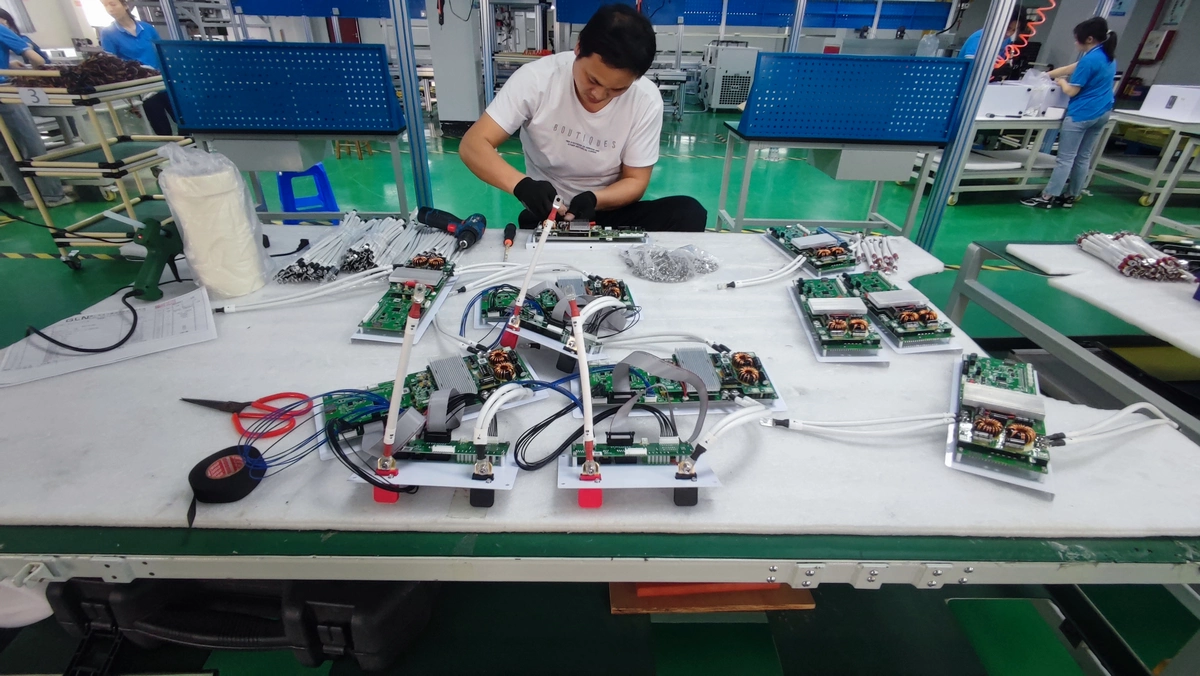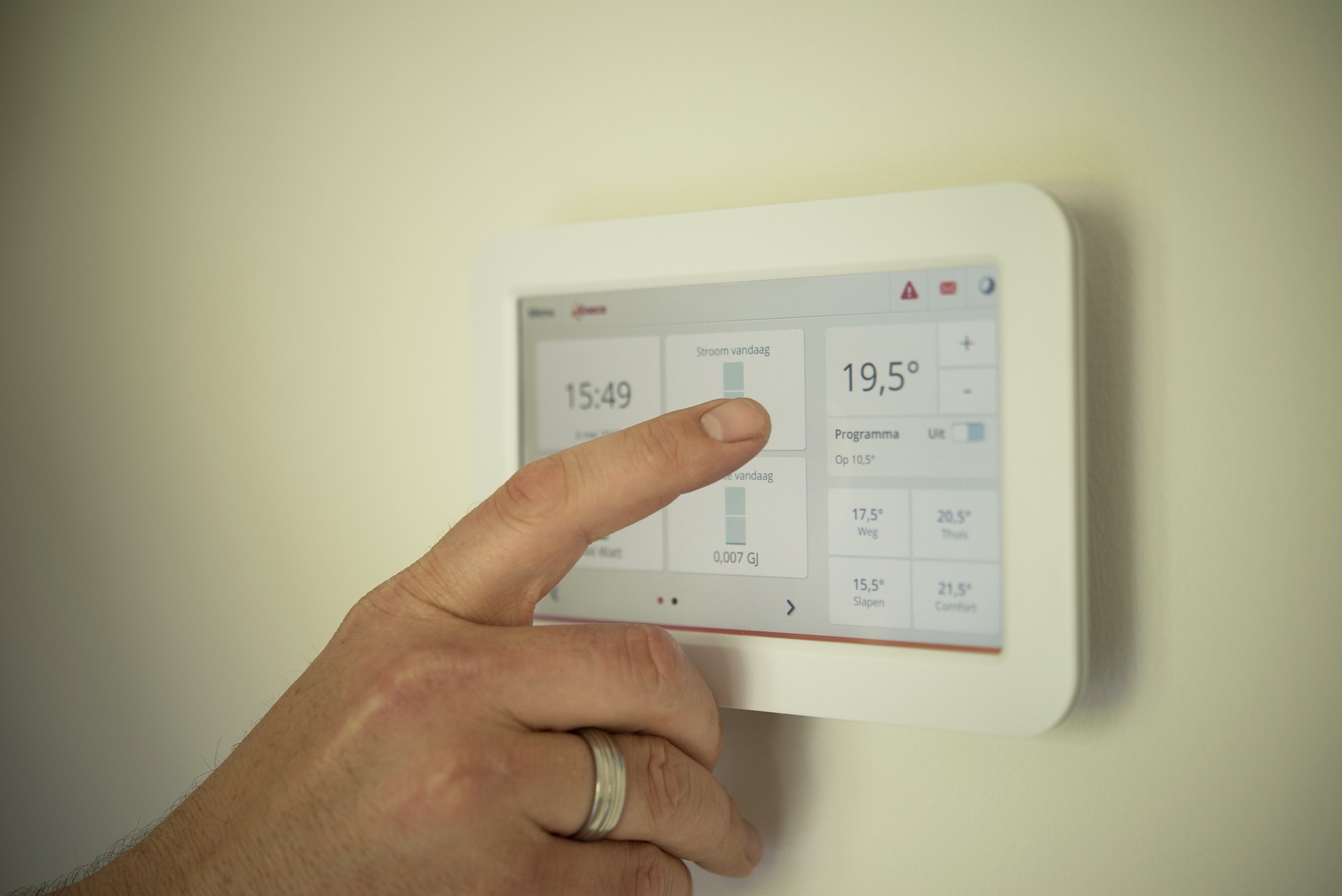Connecting Lifepo4 Batteries In Series: What You Need To Know About Balancing
Balancing LiFePO4 batteries in series is an important part of connecting them together. It's a vital step to ensure the safety of the batteries and to get the most out of their performance.
This article will explain what balancing is, why it's needed, and how to do it correctly.
Connecting LiFePO4 batteries in series can be a great way to boost the capacity and power output of your system. However, if you don't balance them properly, you could end up in a dangerous situation that could damage your equipment or cause a fire.
Read on to learn how to ensure your LiFePO4 batteries are properly balanced when connecting them in series.

What Is Battery Balancing?
Connecting lifepo4 batteries in series can be a daunting task, especially when it comes to understanding the importance of battery balancing. Before getting into the benefits of balancing, it's important to understand what it actually is.
Battery balancing refers to the process of equalizing the charge across multiple cells or batteries connected in series. During balanced charging, the current is distributed to each cell or battery based on its needs until all cells reach a state of full charge simultaneously. It is done with a dedicated circuit that monitors and adjusts each cell’s voltage accordingly.
This process ensures that all cells are at an optimal operating level and allows them to last longer and perform better than if they were not balanced. Balancing prevents each cell from overcharging or discharging, thereby reducing any harm caused due to individual cells running low on power or completely dying out.
In other words, balance helps ensure that all cells are charged safely and efficiently at the same time. With this understanding of what battery balancing is, let’s move on to what are the benefits of having a balanced setup.
What Are The Benefits Of Balancing?
Balancing lifepo4 batteries in series offers a number of key benefits that can help ensure the safety and longevity of your battery system. The most important of these benefits are as follows:
* Increased battery life: Balancing ensures that each cell within a series is charged to its optimum level, resulting in reduced stress on the cells, which can extend their life significantly.
* Improved battery performance: When all the cells within a series are kept at a consistent level, it helps provide consistent voltage and current output, leading to improved performance.
* Enhanced safety: By monitoring and balancing cell voltages in a series, it’s possible to prevent any one cell from becoming overloaded or over-discharged, which could otherwise lead to dangerous conditions such as overheating or fire.
* Reduced energy loss: As cells become imbalanced over time due to natural wear and tear, they begin to draw more energy from other cells in order to keep up with demand. This results in wasted energy and decreased efficiency. Balancing can help reduce this energy loss.
* Better capacity utilization: When cells are balanced regularly, it’s possible to make full use of the entire capacity of each cell in the series instead of relying on just one or two cells that may be stronger than others in the pack.
In addition to these advantages, regular balancing of lifepo4 batteries also helps prevent damage from occurring due to long-term imbalances between cells. With careful monitoring and proper maintenance, you can ensure your battery system is operating safely and at peak efficiency for years to come. Now let's look at how we can effectively balance such batteries in a series setup.
How To Balance Lifepo4 Batteries In Series
Balancing LiFePO4 batteries in series is a great way to maximize the performance and lifespan of your battery packs. In fact, it can increase the life of your batteries by up to 20%, which is an impressive benefit. It also helps ensure that each cell within a pack works together harmoniously, and doesn't suffer from overcharging or discharging.
So what's the best way to balance LiFePO4 batteries in series? Let's explore some of the tools and equipment needed for this process.
One of the most important pieces of equipment you'll need for balancing LiFePO4 batteries in series is a battery balancer. This device monitors each individual cell within a pack and ensures that they all stay balanced and at the same voltage. It also allows you to check on each cell separately, so you can make sure they're all functioning properly. Additionally, it can be used to discharge cells if they become overcharged, which helps prevent damage to the battery pack.
It's also important to have a good quality charger with adjustable voltage settings when balancing LiFePO4 batteries in series. This will allow you to tailor the charging process specifically for each individual cell, ensuring that they are charged correctly without being overcharged or undercharged. A good charger should also come with safety features such as current limiters and temperature sensors to help protect your batteries from any potential damage caused by excessive heat or current draw.
With these tools in hand, you're ready to start balancing your LiFePO4 battery packs! Having discussed the benefits of balancing LiFePO4 batteries in series, let's now turn our attention to what tools and equipment are needed for this purpose.
Tools And Equipment Needed
When connecting several LiFePO4 batteries in series, the proper tools and equipment are necessary for a successful connection.
The most important components are the connectors, wire, and bus bars. Connectors make it possible to securely join each battery cell in series within the pack. Copper or aluminum wire should be used to connect the cells together, while bus bars can be used to join multiple batteries together into one complete battery pack. It is important to use the right size of wire and connector so that the current flow isn’t restricted when connecting several batteries together.
Safety should also be taken into consideration when making a series connection of LiFePO4 batteries. Always wear protective glasses and gloves when handling both the wires and connectors to avoid any accidental contact with electricity or hazardous materials.
Additionally, tools such as soldering irons should only be used by qualified personnel who understand their proper usage and the safety precautions associated with them.
This concludes our discussion on the tools and equipment needed for connecting LiFePO4 batteries in series. Now we will move on to discuss how balancing and discharging these batteries can help ensure a safe connection.

Balancing And Discharging
When connecting lithium-ion batteries in series, balancing and discharging are two essential considerations. Balancing ensures that all cells in the series remain at an equal state of charge, while discharging helps protect against overcharging which can lead to cell damage and even fire.
To balance lithium-ion batteries in series, there are four main steps:
1. Measure each cell's voltage.
2. Make sure each cell has a similar voltage level.
3. Discharge any cells that have a higher voltage than the rest of the cells in the series.
4. Recharge any cells with a lower voltage than the rest of the cells in the series.
These steps should be repeated regularly to ensure that all cells remain balanced and your battery pack is operating safely and efficiently for its intended purpose.
Regularly monitoring and checking your battery pack’s performance is also key for preventing potential issues like overcharging and overdischarging - both of which can cause significant damage to your battery pack if left unchecked. Proper maintenance can help ensure you get maximum performance from your battery pack and avoid any dangerous or damaging situations down the line.
With this knowledge, we turn our attention to balancing and charging the batteries in our next section.
Balancing And Charging
Balancing capacity is essential when connecting LiFePO4 batteries in series. It ensures each cell is charged to the same voltage, avoiding overcharging and extending its life. Charging voltage is also important to consider, as you'll need the right type of charger for the battery.
It's also important to make sure you're balancing cells correctly - this will help evenly distribute the charge and prevent overcharging. Generally speaking, you'll want to check the voltage of the cells several times during the charging process to make sure they're all balanced. It's also a good idea to use a balance charger to ensure all cells are charged at the same rate.
Lastly, you'll want to check the voltage of each cell after charging to make sure they're all balanced. That way, you can be sure your batteries are always operating safely.
Balancing Capacity
When connecting lifepo4 batteries in series, it's important to understand the concept of balancing capacity. This is a process that ensures each cell has access to the same amount of charge. Without this process, one cell may be overcharged or undercharged, reducing the overall life of your battery.
To properly balance your battery, you'll need an external balancing device to monitor and equalize the individual cells' voltages. This device must be connected to each cell and then programmed with the exact parameters for your battery type. Once set up, it will constantly monitor and adjust each cell's voltage and current so that they remain balanced.
Doing this ensures your battery will maintain its full capacity throughout its life and keep you running strong! So if you're looking to get the most out of your lifepo4 battery, don't forget to invest in a good quality balancing device.
Charging Voltage
Once you've balanced your battery, the next step is to determine the best charging voltage. This is important because if the voltage is too low, it won't charge efficiently, and if it's too high, it can damage the cells. So finding that sweet spot is key.
Fortunately, most lifepo4 batteries come with a recommended charging voltage range printed on them. This range should be followed as closely as possible for optimal performance and lifespan of your battery. If you don't have this information available, then consulting a professional or doing some research online can help you figure out what's right for your particular battery type.
You'll also need to make sure that your charger supports the specified voltage range so that you can charge safely and effectively. It's important to remember that while following these guidelines will help ensure your battery stays in good condition, it also pays to monitor its performance regularly and check for any signs of degradation or wear over time.
This way you can catch any issues early and keep your battery running like new!
Balancing Cells
Now that we've discussed the importance of the right charging voltage, let's move on to balancing cells.
This is an essential process for ensuring your battery operates at its best, and it involves making sure each cell is charged to the same level. This helps to maximize performance and minimize wear and tear on individual cells, so it's worth taking the time to do it properly.
To balance your cells, you'll need a specialized charger that can support both charging and balancing. It should also be able to detect any differences in voltage between cells and adjust accordingly.
Once you have this setup, you can then connect all the batteries together in parallel and charge them up until they're fully balanced. You'll know when this is done as your charger will indicate that all the cells are at their optimal levels.
This will help keep your battery running smoothly while getting the most out of it in terms of power output and lifespan. So make sure to take some time to balance your cells regularly for maximum performance!

Balancing And Parallel Connections
In order to ensure the batteries remain balanced, it is important to understand how balancing and charging work when connecting LiFePO4 batteries in series. When connecting multiple batteries in parallel, each battery will share the same voltage across all cells, but the individual current will be distributed among them. As a result, if one of the cells has a higher internal resistance than its counterparts, that cell may draw more current. This can lead to an imbalance in the battery pack which could result in an increased risk of thermal runaway or reduced performance.
To prevent this from happening, it is important to use a balanced charger or balancing circuit when connecting LiFePO4 batteries in parallel. This type of charger monitors the voltage level of each cell and adjusts the charge rate accordingly. As long as all cells are charged at the same rate and stay within their safe operating range, then thermal runaway should not occur.
Balancing and charging LiFePO4 batteries in series is also important for optimizing their performance and extending their lifespan. Each cell should be charged to the same voltage level so that none is over- or under-charged relative to its counterparts. Additionally, by monitoring and adjusting current levels with a balanced charger or balancing circuit, you can ensure that no single cell draws more current than its counterparts which can cause an imbalance in voltage levels. With proper care and maintenance, LiFePO4 batteries can provide reliable power for many years.
The next step is understanding how to balance and connect multiple packs of LiFePO4 batteries together for larger systems such as electric vehicles or solar installations.
Balancing And Multiple Packs
Balancing circuits are key when connecting multiple LiFePO4 batteries in series. They keep the voltage of each cell equal, which prevents overcharging or discharging.
It's important to measure each cell's voltage at regular intervals to ensure they are all balanced. In addition, equalizing voltages helps keep cells from overcharging and balances out any differences between the cells.
It's also important to monitor the cell's temperature, as this can affect the battery's performance. Lastly, the use of a cell balancer can ensure all cells are at their optimal voltage.
Balancing Circuits
To ensure your lifepo4 batteries are connected in series safely, balancing the packs is critical. Balancing circuits is the key to maintaining safe levels of charge between the cells. This ensures that none of the cells are overcharged or depleted and that all cells have an equal amount of charge.
Without balancing circuits, one cell could become overcharged while another becomes too depleted, leading to damage or even explosion of the batteries. Balancing circuits use resistors and other components to monitor voltage levels and adjust accordingly, ensuring all cells remain at equal levels. These circuits can be manual or automatic but regardless, it is essential to include them when connecting multiple packs in series for maximum safety and longevity.
Ultimately, balancing circuits are a must-have for anyone looking to connect their lifepo4 batteries in series for optimal performance and protection.
Equalizing Voltages
So, now that we've discussed the importance of having a balancing circuit when connecting multiple packs in series, let's talk about equalizing voltages.
Equalizing voltages is the process of bringing the cells to an even charge level before charging them together. This means that all cells are brought to the same voltage level, which helps to ensure that no cell is overcharged or depleted. It also helps prevent damage or explosions due to unequal cell voltages.
To do this, you'll need a charger specifically designed for lifepo4 batteries and capable of equalizing your packs. Once you have your charger set up correctly, you'll want to connect all your packs in series and then begin the equalization process. This can take anywhere from one hour to several hours depending on how many cells you have and how large they are.
During this time, don't disconnect any of the cells as this could cause damage or shorts in the system. When the equalization process is complete, disconnect the charger and your packs should be ready for use!
Having properly equalized voltage levels will help protect your batteries from overcharging or depleting unevenly, ensuring maximum performance and safety when connecting multiple packs in series.
Cell Measurement
Now that we've gone over equalizing voltages, let's take a look at cell measurement.
Cell measurement is the practice of measuring individual cells in a series pack to make sure they are all at similar voltage levels.
This process is important for ensuring that no single cell is overcharged or depleted too quickly.
Measuring cells can also help identify any problems with the pack such as shorts or weak cells.
To measure each cell, you'll need a multimeter capable of reading small voltages, and your packs should be disconnected from any other equipment before beginning.
Once you've connected the multimeter to each cell, record and compare their readings to ensure they're all within 0.1V of each other.
If any cells are more than 0.2V different from the others, it means there may be an issue with that particular cell which could lead to further damage if not addressed promptly.
Keeping track of your cell measurements can help you get the most out of your packs and prevent unnecessary damage due to imbalanced voltage levels.

Balancing And Temperature
Balancing and temperature are two key components to consider when connecting lifepo4 batteries in series.
Balancing is the process of equalizing the charge between cells, as unbalanced cells can lead to damaging overcharging or discharging. A balancing circuit is typically used to adjust the voltage of each cell so that they all have an equal amount of charge.
Temperature also plays an important role when connecting lifepo4 batteries in series. High temperatures can cause a battery’s internal resistance to increase, which can reduce its capacity and shorten its life expectancy.
If the temperature gets too high, it can also damage the battery’s chemical structure, leading to permanent damage or even fire hazards. It is therefore important to keep an eye on the temperature of your battery packs and use cooling systems if necessary.
Monitoring both balancing and temperature allows for more accurate charging and discharging cycles, ensuring a longer-lasting battery pack with fewer issues along the way.
With these tips in mind, you'll be well-prepared for troubleshooting any balancing issues that may arise during your project.
Troubleshooting Balancing Issues
When connecting lifepo4 batteries in series, balancing can be a tricky business. To make sure that everything runs smoothly and securely, it's important to have a good understanding of the process and potential issues. Just like the saying “you are only as strong as your weakest link”, if one battery is not properly balanced with the rest you might find yourself in hot water.
To get the best performance out of your batteries, here are some tips for troubleshooting balancing issues:
* Monitor voltage levels regularly. This will help you identify any imbalances early on.
* Check for any physical damage or wear and tear. Improperly stored or maintained batteries can cause problems down the line.
* Invest in a quality battery management system. This will help ensure that all cells are being charged evenly and efficiently.
Balancing is an essential part of connecting lifepo4 batteries in series and neglecting it could lead to costly problems later on. Taking the time to familiarize yourself with these tips and techniques can help keep your equipment running safely and efficiently for years to come.

Conclusion
In conclusion, battery balancing is a complex process that requires a great deal of knowledge and experience. Despite the challenges, it's worth understanding the basics to ensure your batteries are in peak condition.
After all, if you don't take the time to properly balance your LiFePO4 batteries in series, you're risking overcharging and overheating, something I'm sure none of us want!
With some patience and determination though, you'll be able to master this balancing technique and get the most out of your LiFePO4 batteries.

